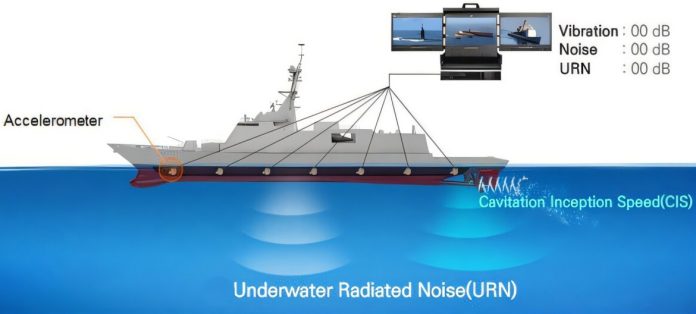
In a breakthrough for naval technology, researchers in South Korea have created the country’s first real-time system that can predict how much noise a ship makes underwater—without using expensive and complex outside equipment.
This new sensor-based system attaches directly to a ship’s hull and monitors underwater radiated noise (URN), which is a key factor in staying hidden during naval operations.
The research was led by Dr. Seong-Hyun Lee from the Korea Institute of Machinery and Materials (KIMM).
Working with defense company LIG Nex1, his team developed a system that continuously tracks vibrations and noise from inside the ship, offering a much faster and easier way to detect problems or changes during operations.
Traditionally, URN has been measured by bringing a ship into a quiet sea area with no other traffic and using external instruments to gather data.
This process is slow, costly, and cannot be done often. The new system changes that by using sensors fixed directly onto the ship’s hull, allowing it to gather vibration data continuously, even during regular missions.
At the heart of this technology is a smart algorithm developed by the researchers. It uses real-time data from the sensors to calculate how much noise the ship is making underwater.
The algorithm looks at vibration patterns, frequency ranges, and other details to give a highly accurate estimate—within just 4 decibels of error—even during complex real-world conditions like changing speeds or propulsion modes.
This accuracy is made possible by carefully placing the sensors in specific spots and using advanced signal processing. Even with a small number of sensors, the system performs extremely well.
It can also detect when something unusual is happening, like abnormal vibration or mechanical issues, thanks to a built-in statistical anomaly detection feature. This means potential faults can be spotted early, reducing the risk of larger problems and cutting down on maintenance costs.
The researchers tested the system on several real naval ships under various conditions, such as different speeds and engine settings. These tests followed international standards for underwater noise measurement and showed that the system performed reliably and accurately.
Beyond military benefits, the technology could also be useful in commercial ships for routine maintenance and noise control. Because it can be adjusted for different ship designs and uses fewer sensors, it’s also cost-effective to install and operate.
Dr. Lee says this innovation doesn’t just help improve stealth at sea—it also boosts safety and efficiency. “Our system allows for real-time prediction and monitoring of underwater noise. It’s a world-class solution that supports both naval strategy and smarter ship management,” he said.



